Since reverse shell files typically transmit non-HTTP requests, I developed a separate payload to dump the lsass.exe process.
Dump lsass
First, I obtain a snapshot to locate the PID of lsass.exe, then use OpenProcess to establish a handle:
|
|
I then utilize the MiniDumpWriteDump function
|
|
The dump of lsass.exe was successfully obtained.

Using PEStudio to analyze the Import Address Table (IAT)
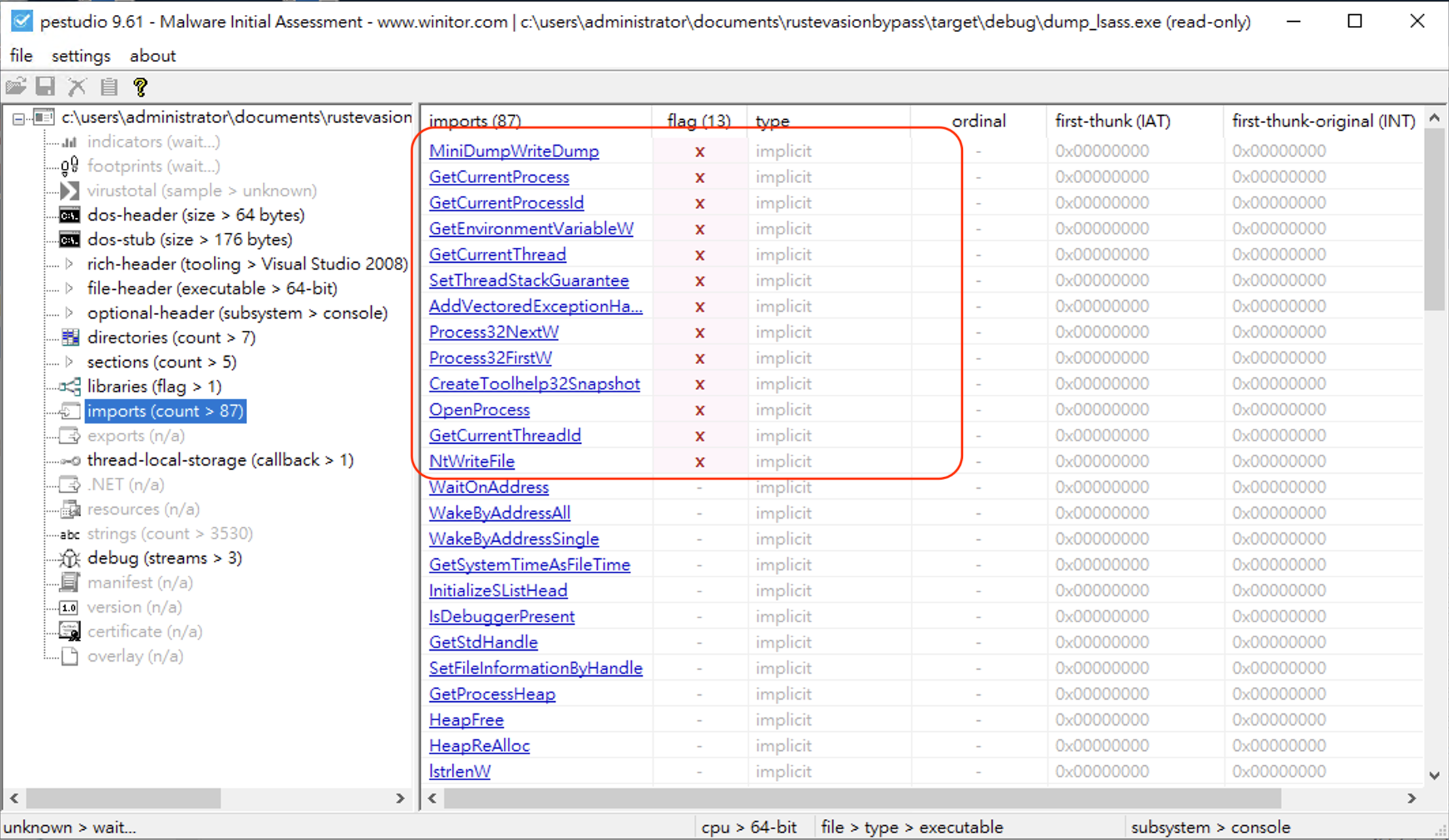 As shown here, the Import Address Table (IAT) clearly contains suspicious function calls such as MiniDumpWriteDump, which are easily identifiable indicators of malicious behavior.
As shown here, the Import Address Table (IAT) clearly contains suspicious function calls such as MiniDumpWriteDump, which are easily identifiable indicators of malicious behavior.
VirusTotal Analysis:
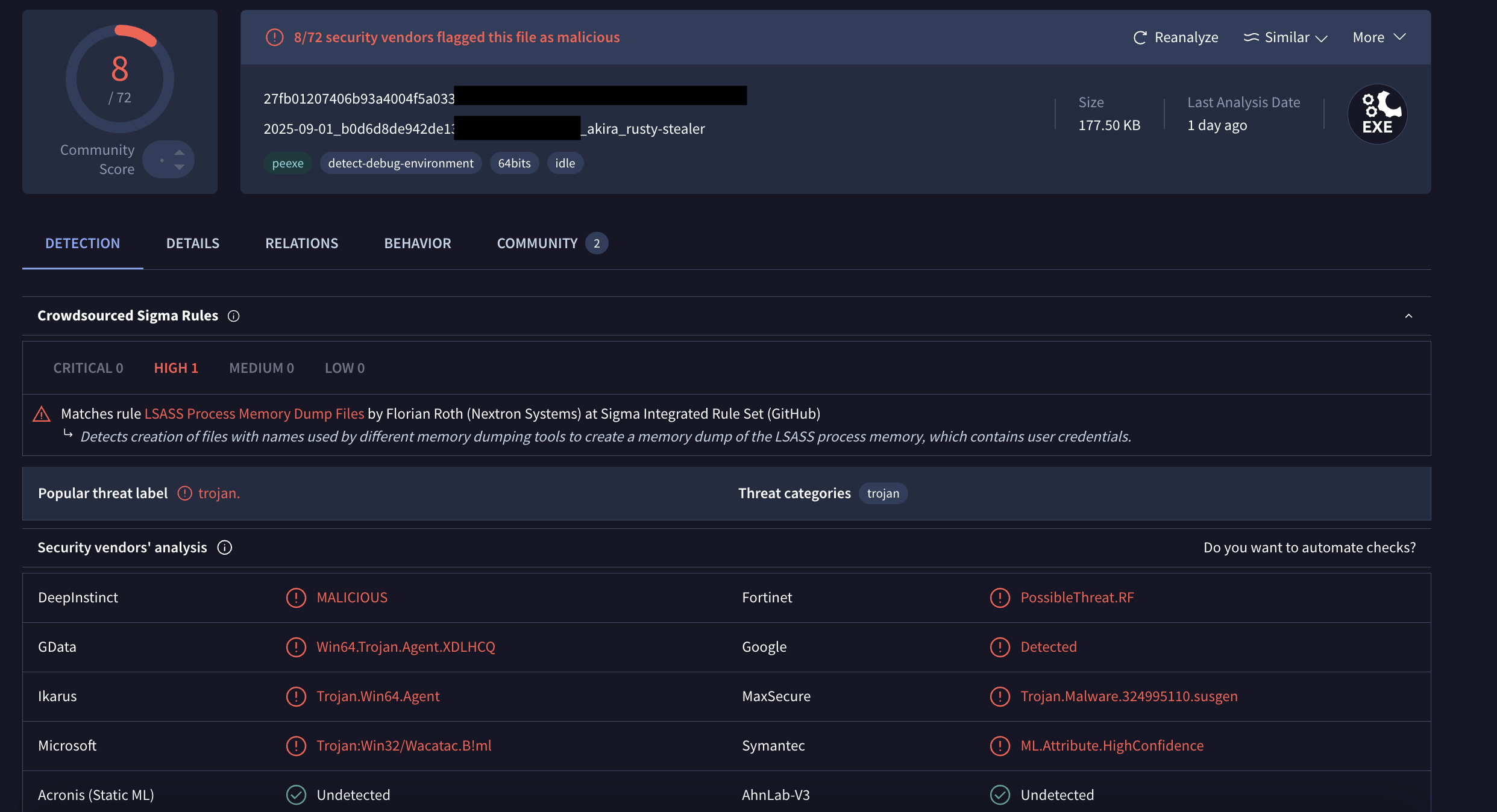 Detection rate: 8/72
Detection rate: 8/72
Notably, Microsoft’s Defender flagged the sample on VirusTotal, while most other AV and EDR vendor engines did not mark it as malicious.
The analysis also flagged the dumping of sensitive information files.

Valloc
The executable file was converted into a raw binary format.
I leveraged VirtualAlloc to allocate a region of memory with executable permissions, into which the shellcode was written and subsequently executed.
VirusTotal:
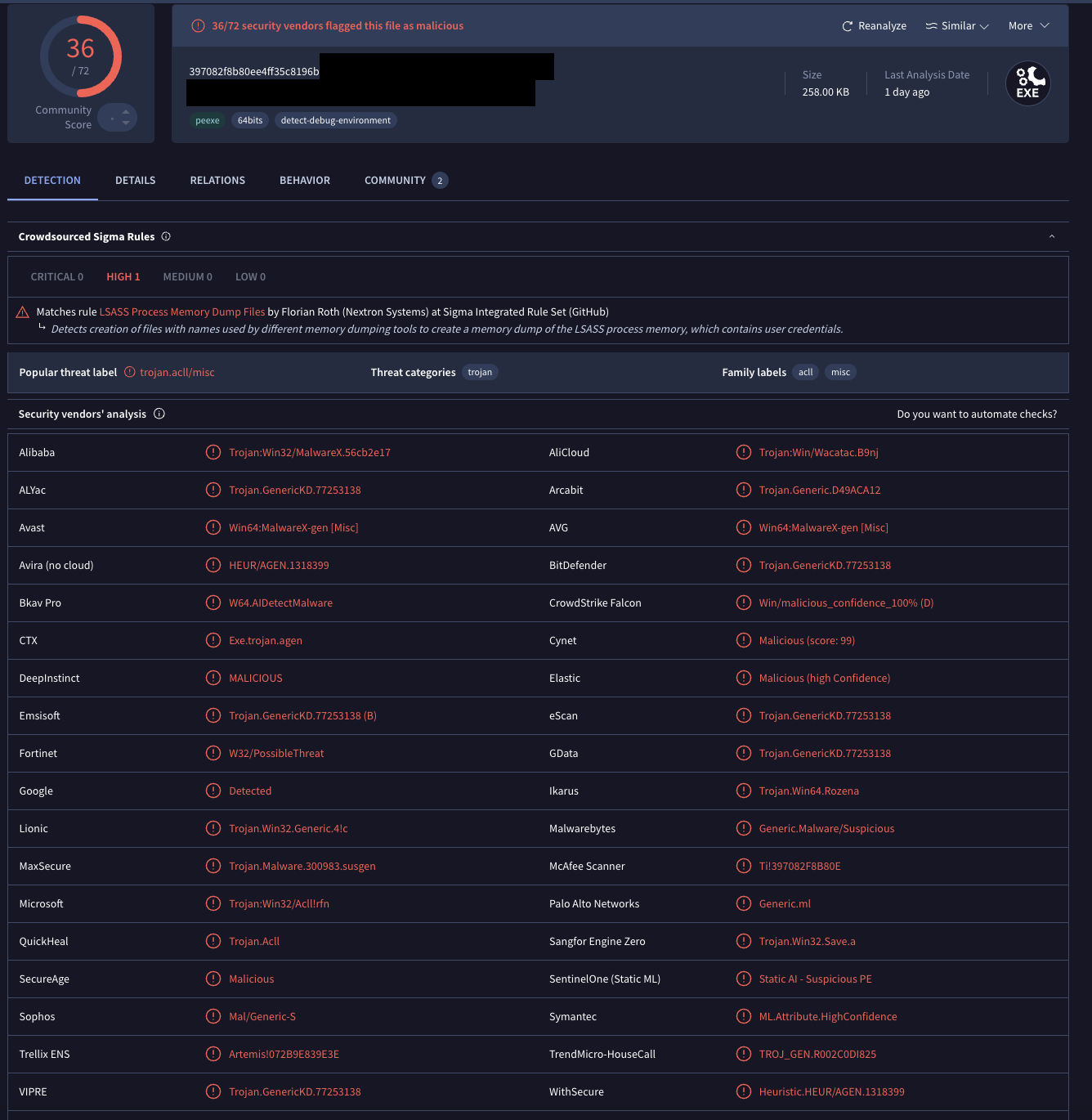 Detection rate: 36/72
Detection rate: 36/72
By using x64dbg’s trace feature, it is easy to quickly observe when kernel32.dll calls VirtualAlloc.

Valloc pointer
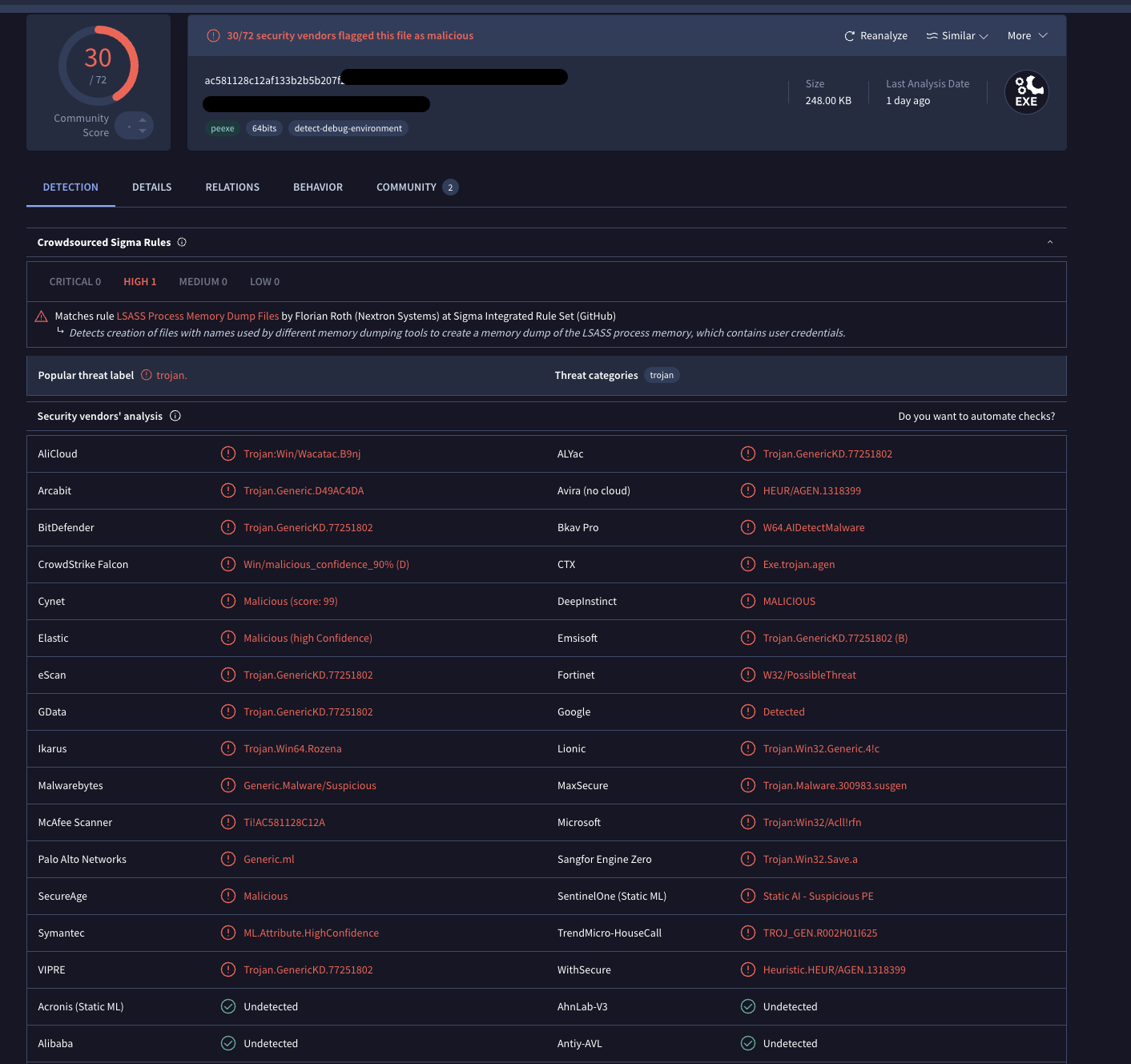 Detection rate: 30/72
Detection rate: 30/72
Also easy to observe kernel32.dll calls VirtualAlloc by x64dbg.

Process Injection
I use OpenProcess open a handle, allocate executable memory, then write shellcode into the allocated memory. Execute the shellcode with a remote thread.
VirusTotal:
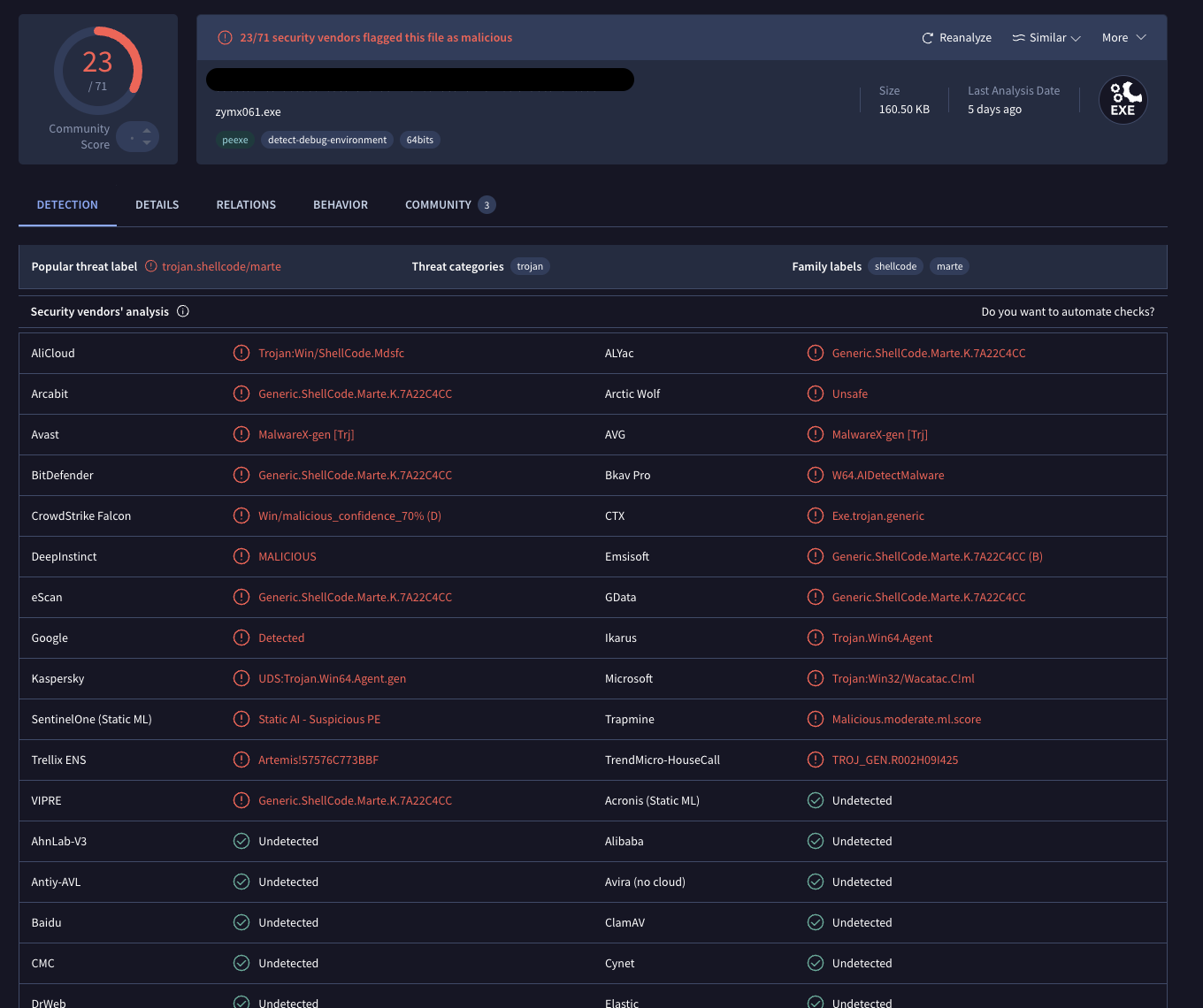 Detection rate: 23/72
Detection rate: 23/72
Using x64dbg, it is straightforward to observe kernel32.dll invoking VirtualAlloc.

WriteProcessMemory

CreateRemoteThread

Process Hollowing
VirusTotal:
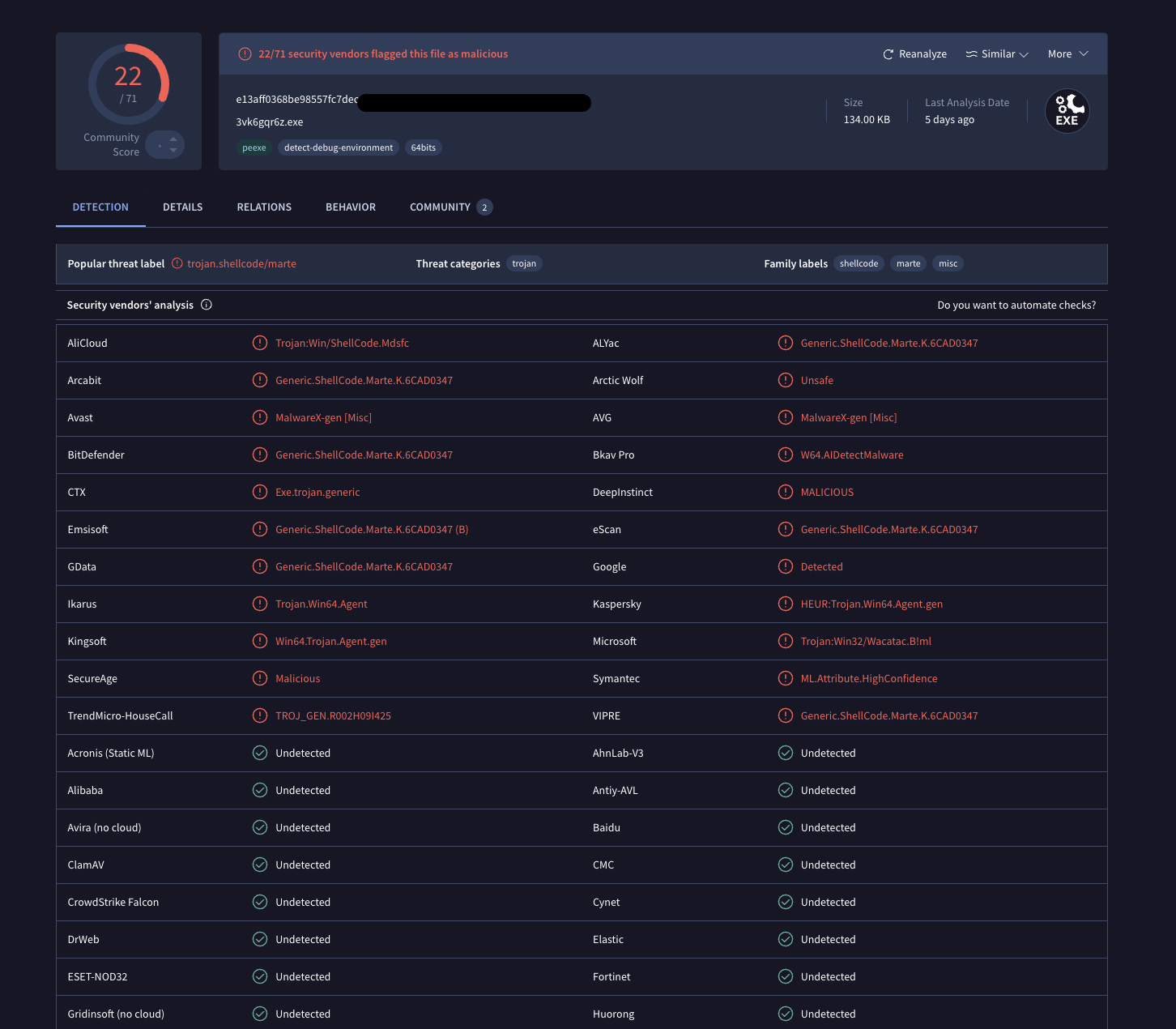 Detection rate: 22/72
Detection rate: 22/72
Similarly as process injection, but not use VirtualAlloc.
Process Hollowing Antistring
In order to evade EDR monitoring, I employ unhooking methods to bypass hooked APIs.
VirusTotal:
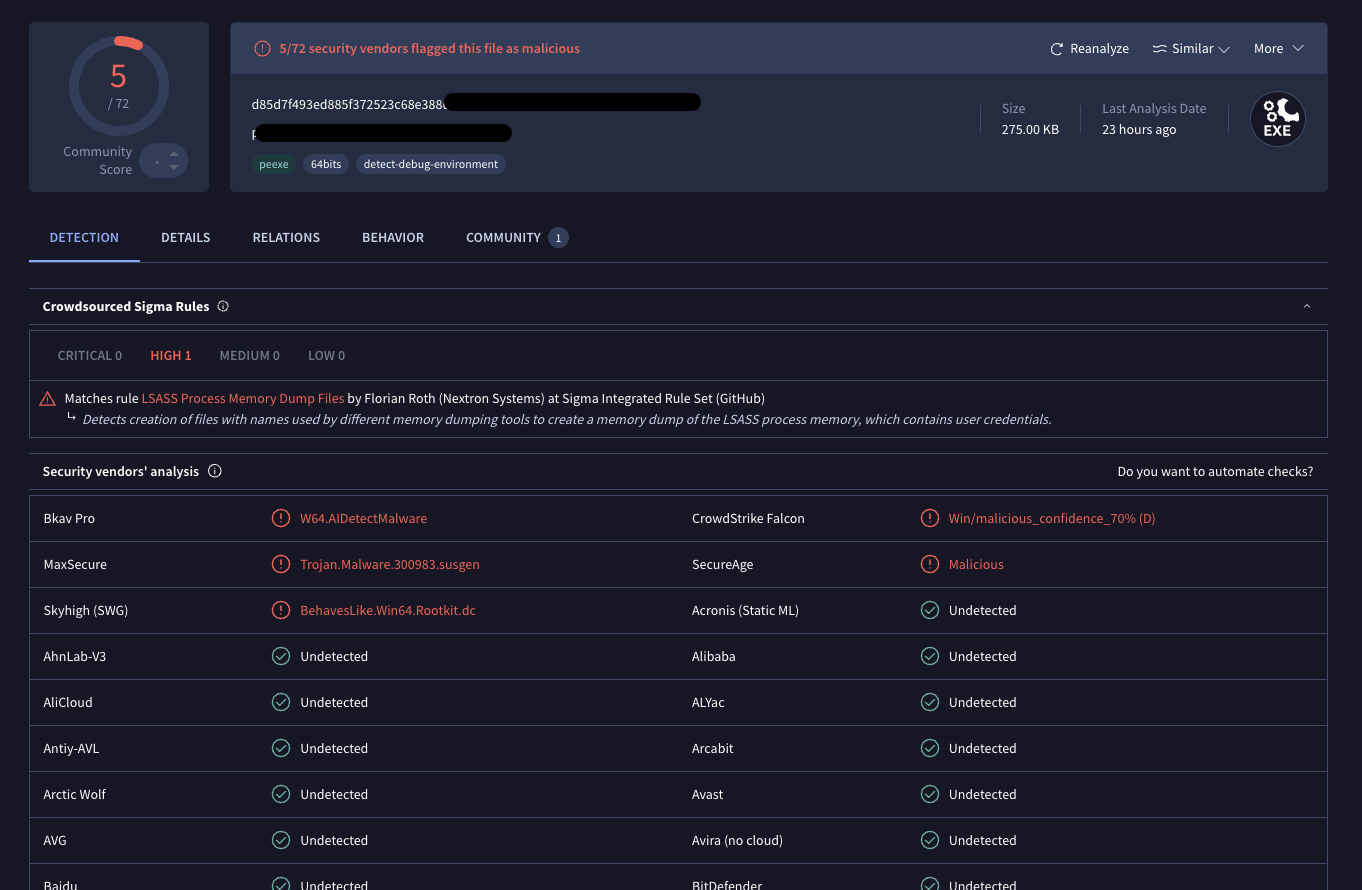 Detection rate: 5/72 (!)
Detection rate: 5/72 (!)
I rename the dump file to txt extension file. But still get rate 5/72
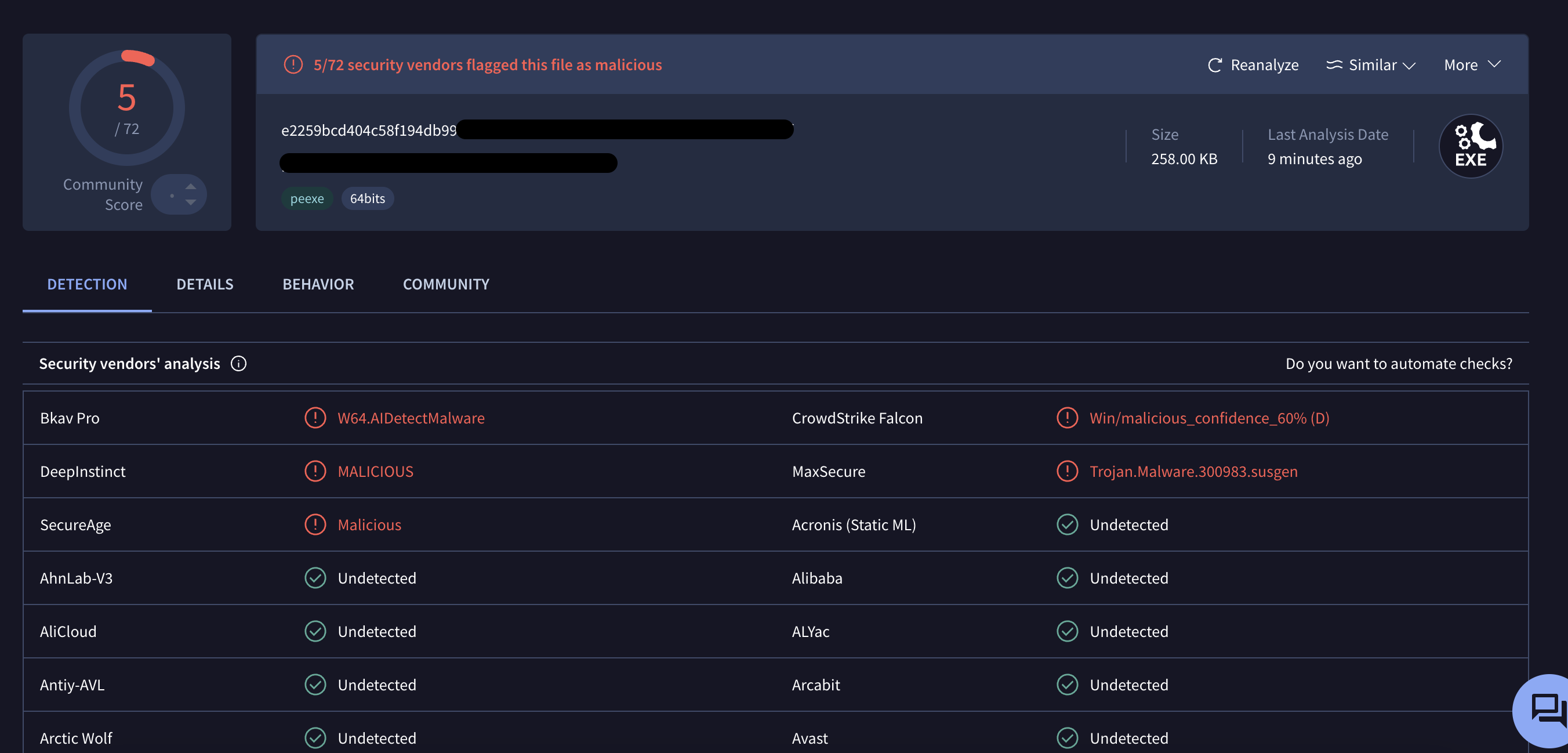
CrowdStrike Falcon change Win/malicious_confidence_70% (D) to Win/malicious_confidence_60% (D)
Bypass Sigma Rules!
2025/09/23 Edit:
After re-analyzing the sample on September 18, I observed clear shellcode indicators.
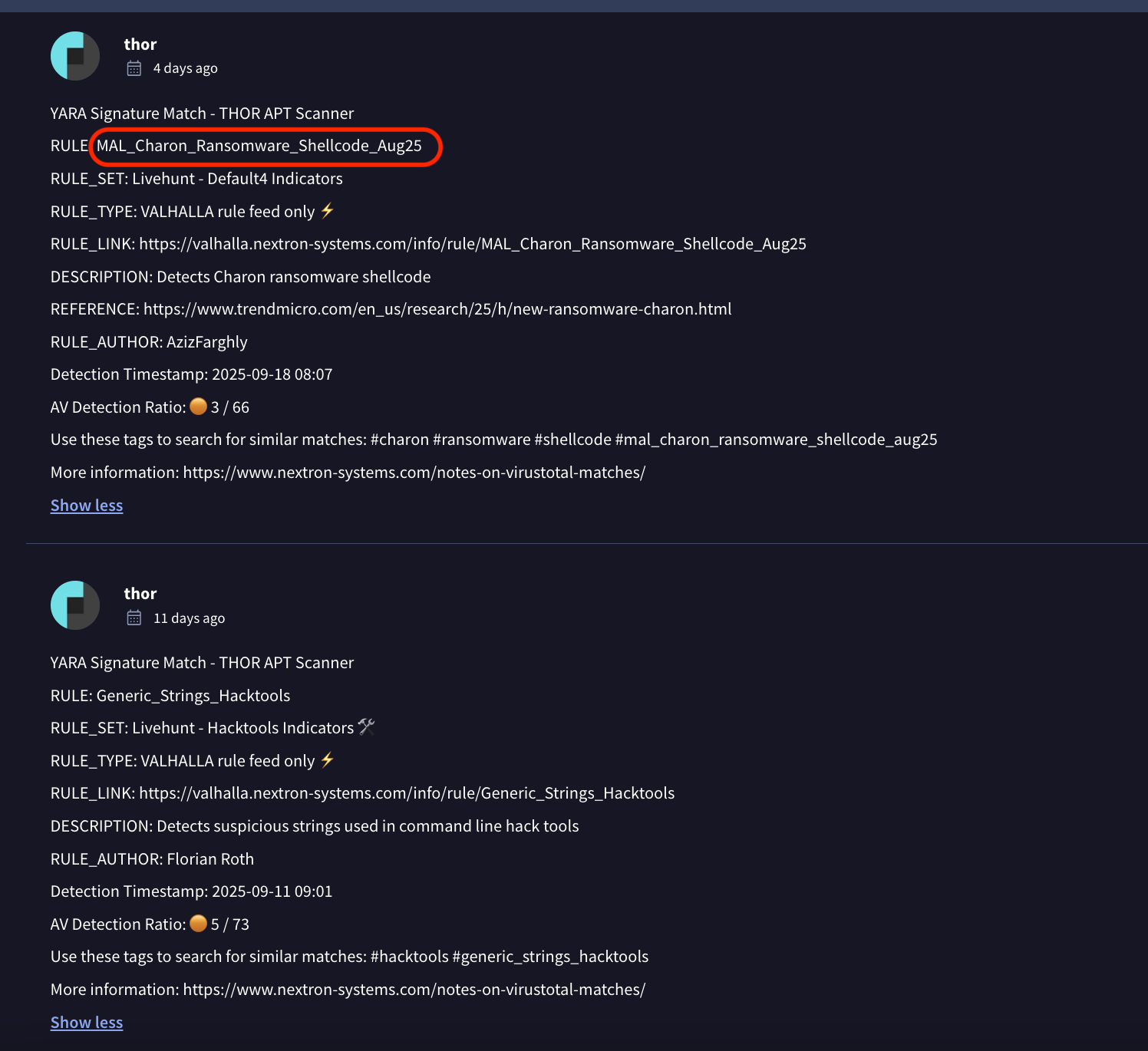
The Next
I’ve decided not to convert the payload to shellcode for now. Instead, I will resolve all Win32 APIs to native/syscall entry points and, without using MiniDumpWriteDump, collect LSASS process data and extract the required artifacts directly from memory.